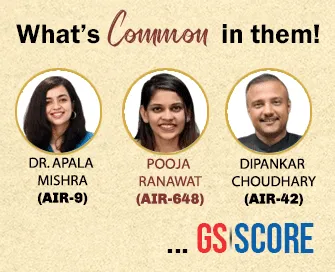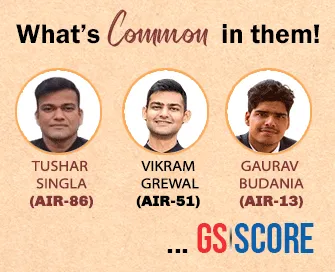

1st August 2025 (9 Topics)
Mains Issues
Context:
The Supreme Court is examining petitions challenging the age cap under the Surrogacy (Regulation) Act, 2021, particularly affecting couples who had initiated surrogacy procedures before the law came into force.
Reproductive Autonomy, Legislative Overreach, and Constitutional Validity
- Legal and Statutory Context
- Surrogacy (Regulation) Act, 2021 and ART (Regulation) Act, 2021 jointly regulate assisted reproductive practices.
- The Acts allow only altruistic surrogacy, banning commercial involvement.
- Age limits imposed for intending couples:
- Married women: 23–50 years
- Married men: 26–55 years
- Single women (widows/divorcees): Allowed only with judicial/medical certification.
- Arguments Before the Supreme Court
- Violation of Article 14: Age-based exclusion is an unreasonable classification and lacks justification.
- Violation of Article 21: Reproductive autonomy is a part of the right to life and personal liberty.
- Lack of Grandfather Clause: The retrospective application of the Act to ongoing procedures violates legislative conventions of transitional justice.
- Constitutional and Ethical Dimensions
- Discriminatory Restrictions: The law excludes unmarried women by choice while permitting widows and divorcees—raising questions under Article 15(1) (non-discrimination).
- Ethical Critique: Courts questioned the inconsistency of banning surrogacy at older ages while natural geriatric pregnancies remain unregulated.
- Medical Autonomy: Petitioners argue that fertility decisions should be based on medical advisories, not age-centric blanket bans.
- Government’s Rationale and Judicial Concerns
- Government’s Stand: Age limits are based on medical safety and child welfare; intended to prevent misuse and commercial surrogacy.
- Judicial Concern: The Supreme Court questioned the blanket prohibition, stating that such harsh implementation defeats the Act’s spirit if genuine parenthood is curtailed.
Way Forward
- Judicial Scrutiny on Constitutional Grounds:The Act must be evaluated for proportionality, non-discrimination, and reasonableness of restrictions under the Constitution.
- Inclusion of Grandfather Clauses:The law should incorporate clauses to accommodate ongoing surrogacy processes initiated prior to its enactment.
- Widening Eligibility:Expand eligibility criteria to include unmarried women by choice and allow case-by-case medical evaluation rather than age-based exclusion.
- Medical Boards and Ethical Screening:Establish state-level ART ethics boards to evaluate individual surrogacy requests on health, intent, and support systems—not just age.


Prelims Articles
Context:
The Prime Minister, Shri Narendra Modi paid tribute to the immortal son of Mother India, Shaheed Udham Singh on his martyrdom day.
Sardar Udham Singh (1899–1940):
- Born: 26 December 1899, Sunam, Punjab (then in British India)
- Executed: 31 July 1940, Pentonville Prison, London
Major Influences & Associations:
- Jallianwala Bagh Massacre (1919): Deeply affected; lost close associates in the massacre.
- Ghadar Party (1924): Joined the revolutionary group aiming to overthrow British rule.
- Komagata Maru incident &Ghadar ideology influenced his radical anti-imperialist outlook.
Imprisonment & Revolutionary Activities:
- 1927: Arrested for illegal possession of firearms; sentenced to 5 years.
- Continued revolutionary activity post-release, including plans for O'Dwyer's assassination.
Assassination of Michael O'Dwyer (1940):
- Date & Place: 13 March 1940, Caxton Hall, London.
- Reason: Retaliation for O'Dwyer's role in the Jallianwala Bagh massacre.
Execution:
- Tried and Hanged: 31 July 1940 under British law for murder and possession of arms.
Legacy:
- Regarded as a martyr and revolutionary hero in Indian freedom struggle.
- Udham Singh Nagar (Uttarakhand): District named in his honour in 1995.


Prelims Articles
Context:
The Supreme Court has directed the Telangana Assembly Speaker to adjudicate disqualification petitions under the Tenth Schedule within a three-month timeframe, criticising delays that undermine the anti-defection law.
Constitutional Basis:
- The Tenth Schedule of the Indian Constitution, inserted by the 52nd Constitutional Amendment Act, 1985, provides for disqualification of legislators on the grounds of defection.
- The Speaker/Chairman of the House is the authority to adjudicate disqualification petitions under this Schedule.
Judicial Interpretation:
- In KihotoHollohan v. Zachillhu (1992), the Supreme Court upheld the constitutional validity of the Tenth Schedule but clarified that Speaker’s decisions are subject to judicial review under Articles 32 and 226.
- The recent Supreme Court verdict (2025) reiterates that delays in deciding disqualification petitions defeat the legislative intent and the very purpose of the anti-defection framework.
Observations in Current Judgment:
- The CJI-led bench criticised the inordinate delay by the Telangana Assembly Speaker in taking action against 10 MLAs.
- The Court fixed a three-month outer limit for deciding such petitions and instructed that adverse inference may be drawn against legislators who deliberately delay proceedings.
- The judgment highlights the breakdown of legislative morality and misuse of discretion by constitutional authorities.


Prelims Articles
Context:
The Ministry of Earth Sciences reported successful wet harbor trials of MATSYA 6000, a manned submersible under the Deep Ocean Mission (DOM), and reaffirmed India’s commitment to the Global Plastics Treaty being negotiated under UNEP.
Global Plastics Treaty (GPT):
- Mandate: A legally binding international treaty under negotiation by the Intergovernmental Negotiating Committee (INC), convened by UNEP.
- Goal: To end plastic pollution by 2040 by ensuring lifecycle-based plastic management—from production to disposal.
- Approach: Focuses on transitioning to a circular economy in plastics, improving recycling, reducing virgin plastic production, and preventing ecosystem contamination.
India’s Domestic Effort – Deep Ocean Mission (DOM):
- Launched by: Ministry of Earth Sciences (MoES) in 2021.
- Implementing Agency:National Institute of Ocean Technology (NIOT), Chennai.
- Budget: ?4,077 crore for a five-year period.
- Objective: To promote India’s blue economy by advancing deep-sea exploration, technology development, and marine biodiversity conservation.
MATSYA 6000 Submersible:
- Purpose: Human-rated submersible for diving to 6000 meters depth, carrying three persons with integrated scientific sensors.


Prelims Articles
Context:
The Union Minister of Ports, Shipping & Waterways inaugurated a 1 MW Green Hydrogen Power Plant at Deendayal Port Authority (DPA), Kandla, as part of the 10 MW project under the National Green Hydrogen Mission.
About the Green Hydrogen Plant at DPA:
- Commissioned: 1 MW Green Hydrogen Plant inaugurated on 31 July 2025.
- Location:Deendayal Port Authority, Kandla, Gujarat.
- Implementing Agency: L&T (engineering and construction partner).
- Production Capacity: Approximately 140 metric tonnes of green hydrogen annually.
- Part of a Larger Project: The 1 MW plant is the first module of a 10 MW Green Hydrogen Plant, whose foundation stone was laid on 26 May 2025 in Bhuj by the Prime Minister.
Strategic Importance:
- Aligns with Maritime India Vision 2030 and the broader goals of Net Zero Emissions.
- Supports decarbonisation of port operations, replacing conventional fuel-based energy systems in maritime logistics.
- Demonstrates speed, scale, and precision in implementation, setting a national benchmark in green hydrogen infrastructure.
National Green Hydrogen Mission (NGHM):
- Launched: January 2023.
- Aim: India to become a global hub for production, usage, and export of green hydrogen.
- Target: To produce 5 MMT of green hydrogen annually by 2030 with a focus on mobility, industry, and power sectors.
- Promotes AatmaNirbharta (self-reliance) and technological innovation in clean energy.


Prelims Articles
Context:
The Indian Navy received INS Himgiri (Yard 3022), the third ship of Project 17A (Nilgiri-class) frigates, on 31 July 2025 from GRSE Kolkata, marking a significant milestone in indigenous warship construction.
Project 17A (P17A):
- A follow-on class to the Shivalik-class (Project 17) stealth frigates.
- Total of seven ships: four being built by Mazagon Dock Shipbuilders Ltd. (MDL), Mumbai and three by Garden Reach Shipbuilders and Engineers (GRSE), Kolkata.
Himgiri (Yard 3022):
- Third ship under Project 17A; first P17A ship built by GRSE.
- Named after erstwhile INS Himgiri, a Leander-class frigate decommissioned in 2005.
Stealth and Automation Capabilities:
- Incorporates reduced Radar Cross Section (RCS) features for enhanced stealth.
- Integrated Platform Management System (IPMS) for centralized control of machinery, sensors, and systems.
Weapon and Sensor Suite:
- Supersonic Surface-to-Surface Missiles (likely BrahMos).
- Medium-Range Surface to Air Missile (MRSAM) system.
- 76 mm main gun, 30 mm and 12.7 mm Close-in Weapon Systems (CIWS).
- Enhanced sonar, radar, and electronic warfare capabilities.


Editorials
Context:
The Supreme Court is currently hearing petitions against the Election Commission of India’s Special Intensive Revision (SIR) in Bihar, which mandates fresh proof of citizenship for all voters under a one-month deadline, raising concerns about mass disenfranchisement.
Constitutional Foundations Undermined
- Historical Vision of Universal Franchise:India, post-Independence, took a radical democratic leap by ensuring voting rights to all adults irrespective of caste, literacy, gender, or wealth — a principle defended by Dr. B.R. Ambedkar and operationalized by CEC Sukumar Sen in 1951.
- Presumed Inclusion to Presumptive Exclusion:The SIR process shifts the voter validation framework from presumed inclusion to suspicion-based exclusion, contradicting the foundational ethos of democratic participation.
- Structural Inaccessibility:By rejecting widely held IDs like Aadhaar or ration cards and demanding rare documents like birth certificates or passports, the process disproportionately excludes the poor, illiterate, and rural populations.
Procedural Concerns and Legal Contradictions
- Denial of Due Process:The absence of safeguards such as appeals, time extensions, or grandfather clauses violates the procedural due process established in Supreme Court judgments like Rahim Ali vs State of Assam (2024) and Lal Babu Hussein vs ERO (1995).
- Exclusion Through Bureaucracy:The ECI’s technical justifications mask the real impact — a disenfranchisement of nearly 65 lakh people in Bihar, drawing parallels to the “D-Voter” crisis in Assam.
- Failure of Institutional Empathy:Despite judicial questioning of humanitarian costs, the ECI’s rigid adherence to technicalities has revealed a systemic indifference to electoral justice and citizen inclusion.
Broader Implications and Democratic Decline
- Democracy as Belonging, Not Documentation:Voting is a right arising from citizenship, not contingent upon one's capacity to produce state-validated papers; this exclusionary shift undermines the moral foundation of democracy.
- Creation of Electoral Inequality:A new class divide may emerge — those with access to documentation versus the voiceless undocumented — leading to policymaking biased in favour of the urban, salaried, and technologically enabled class.
- Democratic Vigilance as a Civic Imperative:The editorial calls for collective resistance by the Supreme Court, Parliament, and civil society to reaffirm that voting is not a privilege but a constitutional guarantee for all citizens, not just the documented elite.
Practice Question:
Examine the constitutional and democratic implications of documentation-based voter verification processes in India. In light of recent initiatives such as Bihar’s Special Intensive Revision, discuss how such measures impact the principle of universal adult suffrage. (250 words)


Editorials
Context:
The National Education Policy (NEP) 2020 has catalysed structural transformations in Early Childhood Care and Education (ECCE), including the introduction of preschool classes in government schools and a potential reorientation of the Anganwadi system.
Expansion of ECCE Infrastructure
- Balvatika Classes in Government Schools:The NEP 2020 mandates the establishment of Balvatika classes (1, 2, and 3) in government schools for children aged 3–6 years, addressing the earlier exclusion of such age groups from formal public education.
- Implications for Personnel and Financing:The shift necessitates large-scale planning in recruitment, training, and financing of early childhood educators, supported under the Samagra Shiksha scheme, though several States/UTs have underutilised this provision.
- Tracking of Implementation Gaps:While some States have started preschool classes, others remain inactive or have only partially adopted preparatory measures, highlighting the urgent need for monitoring state-level compliance and outcomes.
Migration from Anganwadis and Education-Nutrition Balance
- Parent-Driven Migration to Schools:Data from regions like Dadra and Nagar Haveli reveal a strong parental preference for school-based preschool classes over Anganwadis, driven by perceived superior educational opportunities.
- Challenge to Anganwadi Relevance:As children shift out of Anganwadis, their traditional role in ECCE weakens unless reformed. The ‘PoshanBhiPadhaiBhi’ initiative aims to reinforce their educational function but requires grassroots-level implementation.
- Avoiding Schoolification of Preschooling:Government schools must guard against early academic pressures and preserve the play-based, holistic nature of preschool education to nurture cognitive, emotional, and motor development.
Reimagining ECCE: Focusing on 0–3 Years and Home Visits
- Global and National Evidence on Early Years:Research such as the Perry Preschool Project and the Yale-Pratham Odisha study underline the disproportionately high developmental returns of interventions during the first three years of life.
- Need to Devolve 0–3 Focus to Anganwadis:Experts like V.K. Paul and N.C. Saxena have long advocated shifting Anganwadi efforts toward intensive care of children aged 0–3 and maternal health through structured home visits under the ICDS framework.
- Strategic Reallocation of ECCE Responsibilities:With schools catering to 3–6 year-olds, Anganwadis can be repositioned to specialise in 0–3 care and maternal support, ensuring an integrated, life-cycle approach to child development.
Practice Question:
Discuss the structural reforms introduced under the National Education Policy 2020 with respect to Early Childhood Care and Education (ECCE). How can the functional realignment between Anganwadis and government schools enhance the effectiveness of ECCE in India? (250 words)


Editorials
Context:
The imposition of 25% tariffs by the United States on Indian exports and the backdrop of global economic volatility have posed significant short-term trade and monetary policy challenges for India.
Trade and Tariff-Linked Disruptions
- US Tariffs Impact Export Composition:The newly imposed 25% tariffs affect Indian exports like textiles, chemicals, pharmaceuticals, and auto components, which together form a critical segment of India’s export basket contributing over 2% of GDP.
- Supply Chain and Employment Shock:The estimated cost of these tariffs may reach $30 billion, negatively influencing employment, supply chains, and GDP momentum, particularly in the short term.
- Energy Diversification amid Geopolitical Shifts:India has diversified its energy imports—Russian crude oil imports rose from 2% (FY22) to 36% (FY25)—and is now tapping LNG and US crude, aiming to convert supply risks into strategic resilience.
Financial Market Sensitivity and Policy Response
- Foreign Capital Outflows Intensify Pressure:In July 2025, foreign portfolio investors withdrew $1.4 billion, weakening the Rupee by nearly 2%, signaling investor apprehension amidst global uncertainty.
- RBI’s Balancing Act on Inflation and Stability:The RBI faces a trade-off—with inflation projected around 5%, rate cuts must be managed cautiously to avoid exacerbating capital outflows and exchange rate volatility.
- Currency Depreciation Complicates Policy:A weaker rupee increases the import bill, affects policy transmission, and amplifies monetary tightening dilemmas for the central bank.
Strategic Pragmatism and Sectoral Resilience
- Defence and Technology Autonomy Sought:Despite continued defence imports from Russia, India is incrementally pursuing domestic production and Make in India initiatives to reduce strategic dependency.
- Resilient Sectors Counterbalance External Shocks:Sectors such as financial services, consumer goods, and technology exports remain insulated from global volatility and continue to perform robustly.
- Need for Tactical Economic Diplomacy:India’s approach emphasizes smart bargaining over symbolic deals, advocating for structural relief across agriculture, defence, and tech markets while countering protectionist trends from nations like the US, EU, and UK.
PracticeQuestion:
In light of the escalating global trade tensions and unilateral tariff measures by major economies, critically examine how India can balance its external sector vulnerabilities with its long-term objective of strategic economic autonomy. Illustrate with examples from recent trade and energy diversification decisions. (250 words)



